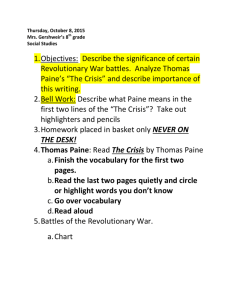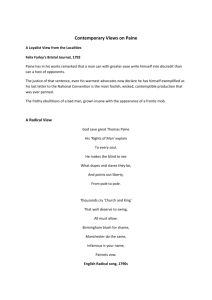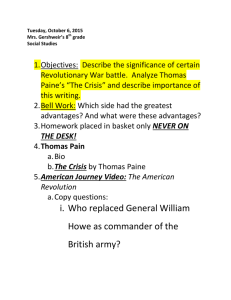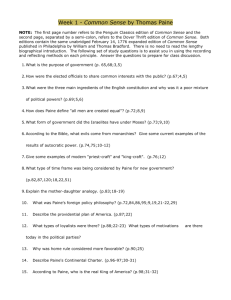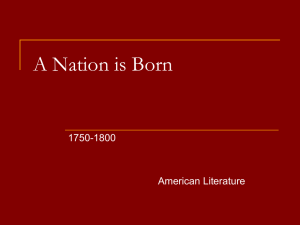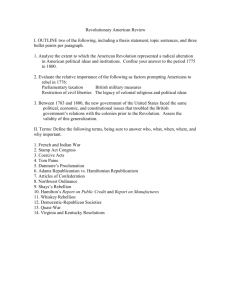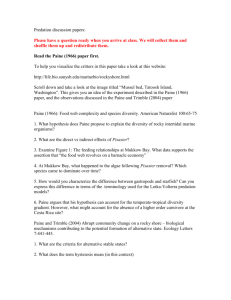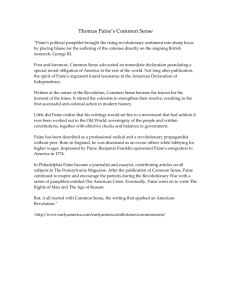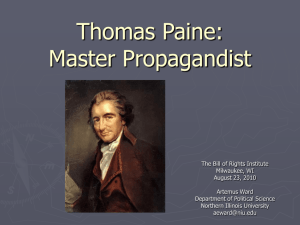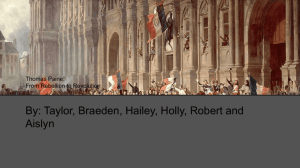American Revolution Round Table Discussion
advertisement
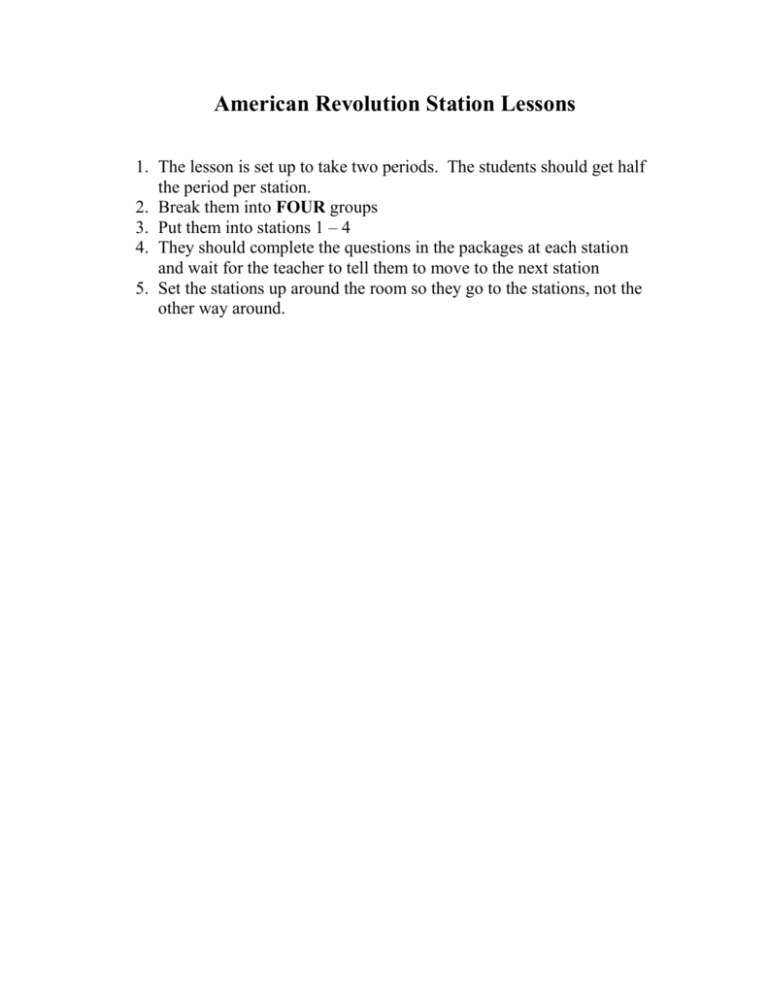
American Revolution Station Lessons 1. The lesson is set up to take two periods. The students should get half the period per station. 2. Break them into FOUR groups 3. Put them into stations 1 – 4 4. They should complete the questions in the packages at each station and wait for the teacher to tell them to move to the next station 5. Set the stations up around the room so they go to the stations, not the other way around. Station One: Building a Timeline Instructions: Using your text book and any other sources you have at your disposal, create a timeline outlining the important dates and events leading up to the American Revolution. This Timeline should: 1. 2. 3. 4. be constructed chronologically contain all important dates and the name of the event contain a brief description of the event be organized in such a way that it is easy to read and understand You may not copy your timeline simply from the internet. Your textbook should be your first resource and will supply you with most of what you need. Station Two: Important People Instructions: Identify the following people and briefly explain their importance in American History focusing specifically on the American Revolution. 1. Benjamin Franklin 2. Thomas Jefferson 3. George Washington 4. Louis Montcalm 5. William Pitt 6. James Wolfe 7. Pontiac 8. George Grenville 9. Patrick Henry 10.John Dickinson 11.Mercy Otis Warren 12.Sam Adams 13.Paul Revere 14.Thomas Paine 15.King George III Note: You will find all of these people mentioned in the textbook but you can use the internet briefly to help you get more information if required. Station Three: Important Events Instructions: Identify the following events and briefly explain their importance in American History focusing specifically on the American Revolution. 1. Salutary Neglect 2. The French and Indian War 3. The Albany Plan 4. Virginia Militia 5. Treaty of Paris 6. Proclamation of 1763 7. The Sugar Act 8. The Stamp Act 9. Nonimportation Agreements 10.The Townshend Acts 11.Taxation Without Representation 12.Sons of Liberty 13.Daughters of Liberty 14.The Boston Massacre 15.Boston Tea Party 16.Second Continental Congress 17.“The Association” Note: All of these terms can be found in your text book but you can supplement the information later if there is not enough information Station Four: The Intolerable Acts Instructions: Listed below are the Intolerable Acts. 1. Briefly explain the what the act was and its purpose 2. What was the British justification – what was its benefit? 3. What was the American reaction? The Acts: Quartering Act Quebec Act Massachusetts Government Act Administration of Justice Act Boston Port Act Note: Below is an example of how you could set up your comparison. Intolerable Act Quartering Act Quebec Act Massachusetts Government Act Administration of Justice Act Boston Port Act Summary of Act British Justification American Reaction Station Five: Causes of the American Revolution Instructions: Using your text book, outline all of the causes you can find for the American Revolution. Be sure to organize them using the heading listed below to ensure you can find them later when you need them. Political Causes Social Causes Economic Causes Once you’ve completed the causes briefly describe the importance of each cause and what it meant to the American colonists. Note: Some causes might overlap so be sure to explain why you feel this is the case. Station Six: Interpreting Primary Resources Instructions: Read the following Primary Source Reading, “Common Sense Dictates,” written by Thomas Paine. When you have finished reading the excerpt closely, answer the following questions. 1. According to Paine, why does Britain protect the colonies? 2. What does Paine think America should do to strengthen its place in the world? 3. How, according to Paine, do the colonies’ ties to England hurt America? 4. Why does Paine think America is safe from invaders? 5. Does Paine rely primarily on logic or emotion to support his proposal that America sever its ties with Great Britain? Explain your answer. Answer the following questions considering the nature of the source itself. 1. Why is this considered a Primary resource? 2. What is the difference between a Primary Resource and a Secondary resource? 3. What is the advantage of using Primary resources in historical research as opposed to Secondary sources? Explain. 4. Do you think Paine has a ‘bias’? Explain your reasoning.
